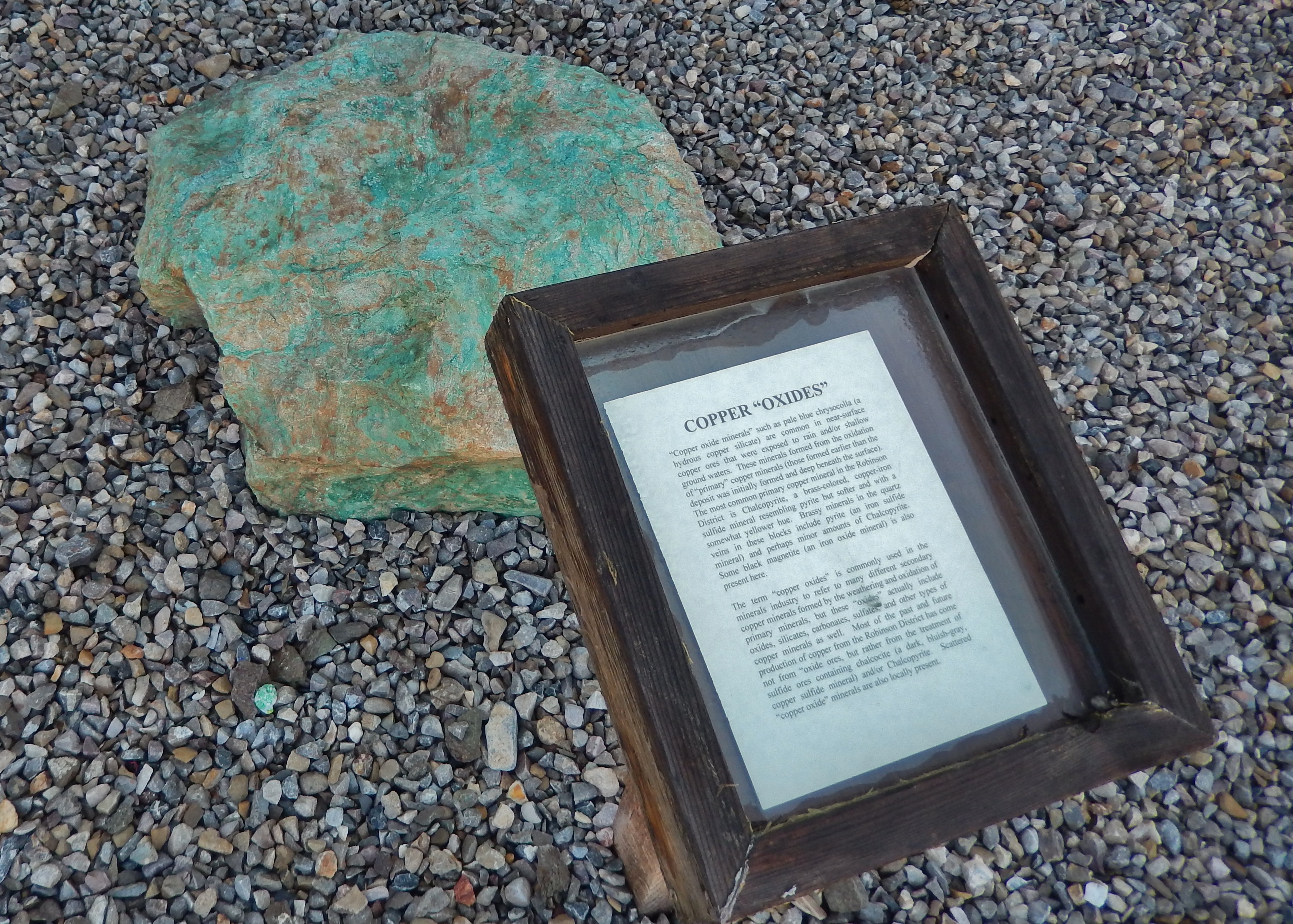Photograph as originally submitted to
this page in the Historical Marker Database
www.HMdb.org.
Click on photo to resize in browser. Scroll down to see metadata.
Photographer: Cosmos Mariner
Taken: July 30, 2014
Caption:
The Liberty Pit Exhibit (across parking lot from marker): Copper | Additional Description: “Copper oxide minerals” such as pale blue chrysocolla (a hydrous copper silicate) are common in near surface copper ores that were exposed to rain and/or shallow ground waters. These minerals formed from the oxidation of “primary” copper minerals (those formed earlier than the deposit was initially formed and deep beneath the surface). The most common primary copper mineral in the Robinson District is Chalcopyrite, a brass-colored, copper-iron sulfide mineral resembling pyrite but softer and with a somewhat yellower hue. Brassy minerals in the quartz veins in these blocks include pyrite (an iron sulfide mineral) and perhaps minor amounts of Chalcopyrite. Some black magnetite (an iron oxide mineral) is also present here.
The term “copper oxides” is commonly used in the minerals industry to refer to many different secondary copper minerals formed by the weathering and oxidation of primary minerals, but these “oxides” actually include oxides, silicates, carbonates, sulfates and other types of copper minerals as well. Most of the past and future production of copper from the Robinson District has come not from “oxide” ores, but rather from the treatment of sulfide ores containing chalcocite (a dark, bluish-gray, copper sulfide mineral) and/or Chalcopyrite. Scattered “copper oxide” minerals are also locally present.
Submitted: November 20, 2018, by Cosmos Mariner of Cape Canaveral, Florida.
Database Locator Identification Number: p454678
File Size: 4.674 Megabytes
To see the metadata that may be embedded in this photo, sign in and then return to this page.
